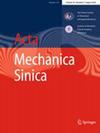A systematic study on the energy absorption performance of plate-lattices: performance, design, and optimization
Abstract
The energy absorption performance (EAP) of plate-lattices was systematically investigated, both independently and when applied to square-tube filling. Based on this, an optimization design model for the crashworthiness of lattice-filled structures was established. The results indicate that among the three basic plate-lattices, the FCC has the best overall EAP. When subjected to three-point bending loads, the curvature of thin-walled tubes and the number of filling cells do not significantly enhance EAP; increasing the wall thickness can improve the specific energy absorption (SEA), but wall thickness has a significant impact on the peak crushing force (PCF)—as the wall thickness increases, the PCF also increases; increasing the relative density can enhance both SEA and PCF, but its energy absorption stability (EAS) initially improves and then weakens. When considering density distribution, placing more material in the middle part of the structure results in better EAP. Under axial loads, curved-tubes have lower SEA and poorer EAS compared to straight-tubes; when considering oblique loading, smaller tilt angles have less impact on the EAP; increasing the number of cells reduces the EAP but can improve EAS. Additionally, the optimization model proposed in this paper can significantly enhance the EAP of the designed structure.

 求助内容:
求助内容: 应助结果提醒方式:
应助结果提醒方式:


